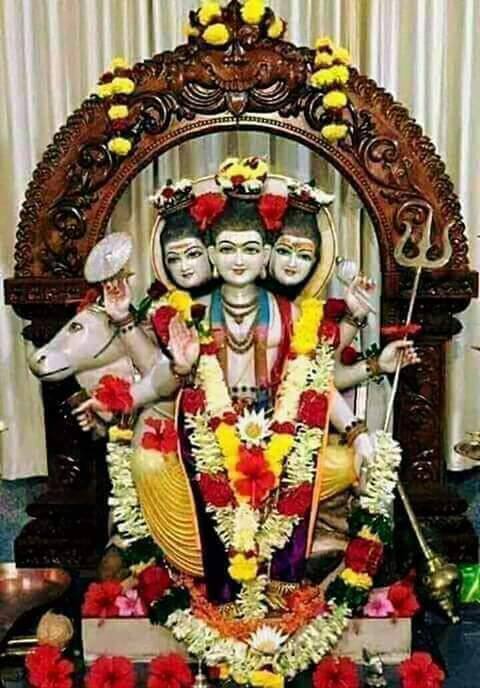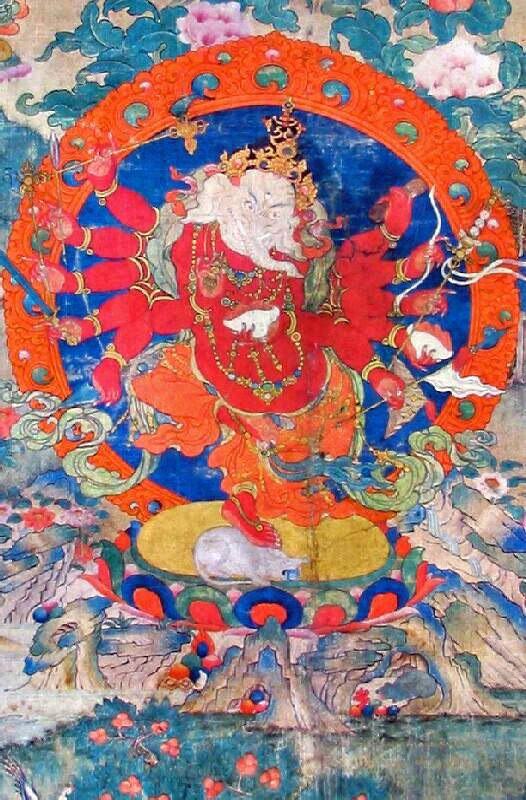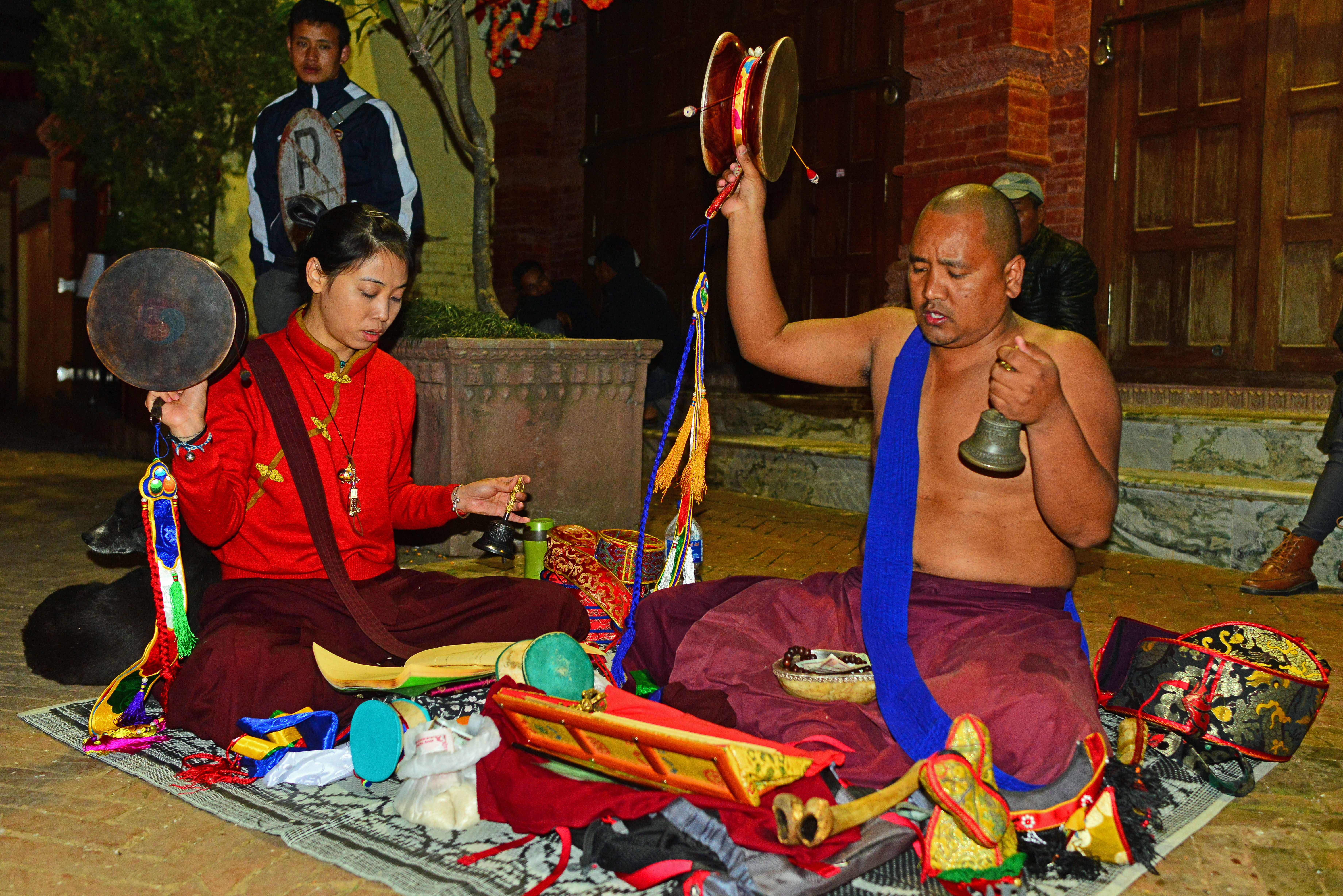|
Avadhuta
''Avadhūta'' ( IAST ', written as अवधूत) is a Sanskrit term from the root 'to shake' (see V. S. Apte and Monier-Williams) that, among its many uses, in some Indian religions indicates a type of mystic or saint who is beyond egoic-consciousness, duality and common worldly concerns and acts without consideration for standard social etiquette. Avadhūta is a Jivanmukta who gives his insight to others and teaches them about his realisation of the true nature of the ultimate reality (Brahman) and self ( Ātman) and takes the role of a guru to show the path of ''moksha'' to others. Some Avadhūta also achieve the title of ''Paramahamsa''. Similar figures (colloquially called 'mad/crazy monks') are also known in Buddhist traditions, such as the medieval Zen monk Ikkyū, and the 20th century Tibetan tulku Chögyam Trungpa Rinpoche. In Tibetan Buddhism the equivalent type is called a nyönpa (). Types of avadhūtas Feuerstein (1991: p. 105) frames how the term ''avadhūt ... [...More Info...] [...Related Items...] OR: [Wikipedia] [Google] [Baidu] |
Avadhuta Gita
''Avadhuta Gita'' (Devanagari: अवधूत गीता, IAST: ) is a Sanskrit text of Hinduism whose title means "Song of the free soul". The text's poetry is based on the principles of Advaita and Dvaita schools of Hindu philosophy.Katz, Jerry (2007). ''One: essential writings on nonduality''. Sentient Publications. , Source/ref> The text is attributed to Dattatreya, and extant manuscripts have been dated to approximately the 9th or 10th century CE. It consists of 289 ''shlokas'' (metered verses), divided into eight chapters. The first seven chapters are the text's oldest layer, and the eight chapter is likely a later interpolation. It may have been composed in the deccan states of India, probably Maharashtra. ''Avadhuta Gita'' has been one of the most important texts of the Natha Yogi tradition of Hinduism. Date Abhayananda states, "The actual date of authorship of the ''Avadhut Gita'' is unknown, but, judging by its terminology and style, it appears to have been writte ... [...More Info...] [...Related Items...] OR: [Wikipedia] [Google] [Baidu] |
Dattatreya
Dattatreya ( sa, दत्तात्रेय, ), Dattā or Dattaguru, is a paradigmatic Sannyasi (monk) and one of the lords of yoga, venerated as a Hindu god. In Maharashtra, Goa, Andhra Pradesh, Telangana, Karnataka, Gujarat, and Madhya Pradesh he is a syncretic deity, In Bengal he is known as 'Trinath', avatar of the three Hindu gods Brahma, Vishnu, and Shiva, who are also collectively known as the Trimurti. In other regions, and some versions of texts such as Garuda Purana, Brahma Purana and Sattvata Samhita, he is an avatar of Vishnu only. Several Upanishads are dedicated to him, as are texts of the Vedanta-Yoga tradition in Hinduism. One of the most important texts of Hinduism, namely Avadhuta Gita (literally, "song of the free soul") is attributed to Dattatreya. Over time, Dattatreya has inspired many monastic movements in Shaivism, Vaishnavism, and Shaktism, particularly in the Deccan region of India, south India, Gujarat, Madhya Pradesh, Rajasthan and Himalayan regi ... [...More Info...] [...Related Items...] OR: [Wikipedia] [Google] [Baidu] |
Crazy Wisdom
Divine madness, also known as ''theia mania'' and crazy wisdom, refers to unconventional, outrageous, unexpected, or unpredictable behavior linked to religious or spiritual pursuits. Examples of divine madness can be found in Hellenism, Christianity, Hinduism, Buddhism, Sufism, and Shamanism. It is usually explained as a manifestation of enlightened behavior by persons who have transcended societal norms, or as a means of spiritual practice or teaching among mendicants and teachers. These behaviors may seem to be symptoms of mental illness to mainstream society, but are a form of religious ecstasy, or deliberate "strategic, purposeful activity," "by highly self-aware individuals making strategic use of the theme of madness in the construction of their public personas". Cross-cultural parallels According to June McDaniel and other scholars, divine madness is found in the history and practices of many cultures and may reflect religious ecstasy or expression of divine love. Plato ... [...More Info...] [...Related Items...] OR: [Wikipedia] [Google] [Baidu] |
Aghori
The Aghori (from Sanskrit '; ) are a monastic order of ascetic Shaivite sadhus based in Uttar Pradesh, India Uttar Pradesh (; , 'Northern Province') is a state in northern India. With over 200 million inhabitants, it is the most populated state in India as well as the most populous country subdivision in the world. It was established in 1950 .... They are the only surviving sect derived from the '' Kāpālika'' tradition, a Tantric, non-Puranic form of Shaivism which originated in Medieval India between the 7th and 8th century CE. Similarly to their predecessors, Aghoris usually engage in Post-mortem interval, post-mortem rituals, often dwell in charnel grounds, smear cremation ashes on their bodies, and use bones from human corpses for crafting ''Kapala, kapāla'' (skull cups which Shiva and other Hindu deities are often iconically depicted holding or using) and jewellery. Their practices are sometimes considered contradictory to orthodox Hinduism. Many Aghor ... [...More Info...] [...Related Items...] OR: [Wikipedia] [Google] [Baidu] |
Charnel Ground
A charnel ground (Sanakrit: श्मशान; IAST: śmaśāna; Tibetan pronunciation: durtrö; )Rigpa Shedra (July 2009). 'Charnel ground'. Source(accessed: Saturday December 19, 2009) is an above-ground site for the putrefaction of bodies, generally human, where formerly living tissue is left to decompose uncovered. Although it may have demarcated locations within it functionally identified as burial grounds, cemeteries and crematoria, it is distinct from these as well as from crypts or burial vaults. In a religious sense, it is also a very important location for sadhana and ritual activity for Indo-Tibetan traditions of Dharma particularly those traditions iterated by the Tantric view such as Kashmiri Shaivism, Kaula tradition, Esoteric Buddhism, Vajrayana, Mantrayana, Dzogchen, and the sadhana of Chöd, Phowa and Zhitro, etc. The charnel ground is also an archetypal liminality that figures prominently in the literature and liturgy and as an artistic motif in Dharmi ... [...More Info...] [...Related Items...] OR: [Wikipedia] [Google] [Baidu] |
International Alphabet Of Sanskrit Transliteration
The International Alphabet of Sanskrit Transliteration (IAST) is a transliteration scheme that allows the lossless romanisation of Brahmic family, Indic scripts as employed by Sanskrit and related Indic languages. It is based on a scheme that emerged during the nineteenth century from suggestions by Sir Charles Trevelyan, 1st Baronet, Charles Trevelyan, William Jones (philologist), William Jones, Monier Monier-Williams and other scholars, and formalised by the Transliteration Committee of the Geneva International Congress of Orientalists, Oriental Congress, in September 1894. IAST makes it possible for the reader to read the Indic text unambiguously, exactly as if it were in the original Indic script. It is this faithfulness to the original scripts that accounts for its continuing popularity amongst scholars. Usage Scholars commonly use IAST in publications that cite textual material in Sanskrit, Pāḷi and other classical Indian languages. IAST is also used for major e-te ... [...More Info...] [...Related Items...] OR: [Wikipedia] [Google] [Baidu] |
John Woodroffe
Sir John George Woodroffe (15 December 1865 – 16 January 1936), also known by his pseudonym Arthur Avalon, was a British Orientalist whose extensive and complex published works on the Tantras, and other Hindu traditions, stimulated a wide-ranging interest in Hindu philosophy and yoga. Life Woodroffe was the eldest son of James Tisdall Woodroffe and his wife Florence, daughter of James Hume. James Woodroffe was Advocate-General of Bengal and Legal Member of the Government of India, a Justice of the Peace, and a Knight of St. Gregory. John was educated at Woburn Park School and the University College, Oxford, where he took second classes in jurisprudence and the Bachelor of Civil Law examinations. He was called to the Bar by the Inner Temple in 1889, and in the following year was enrolled as an advocate of the Calcutta High Court. He was soon made a Fellow of the Calcutta University and appointed Tagore Law Professor. He collaborated with Ameer Ali in a widely used textbook ... [...More Info...] [...Related Items...] OR: [Wikipedia] [Google] [Baidu] |
Sādhanā
''Sādhanā'' (; ; ) is an ego-transcending spiritual practice. It includes a variety of disciplines in Hindu, Buddhist and Jain traditions that are followed in order to achieve various spiritual or ritual objectives. Sadhana is done for attaining detachment from worldly things, which can be a goal of a Sadhu. Karma yoga, Bhakti yoga and Gnyan yoga can also be described as Sadhana, in that constant efforts to achieve maximum level of perfection in all streams in day-to-day life can be described as Sadhana. ''Sādhanā'' can also refer to a tantric liturgy or liturgical manual, that is, the instructions to carry out a certain practice. Definitions The historian N. Bhattacharyya provides a working definition of the benefits of sādhanā as follows: B. K. S. Iyengar (1993: p. 22), in his English translation of and commentary to the ''Yoga Sutras of Patanjali'', defines sādhanā in relation to abhyāsa and kriyā: Paths The term sādhanā means "methodical dis ... [...More Info...] [...Related Items...] OR: [Wikipedia] [Google] [Baidu] |
Ganachakra
A ganacakra ( sa, गणचक्र ' "gathering circle"; ) is also known as tsok, ganapuja, cakrapuja or ganacakrapuja. It is a generic term for various tantric assemblies or feasts, in which practitioners meet to chant mantra, enact mudra, make votive offerings and practice various tantric rituals as part of a ''sādhanā'', or spiritual practice. The ganachakra often comprises a sacramental meal and festivities such as dancing, spirit possession, and trance; the feast generally consisting of materials that were considered forbidden or taboo in medieval India like meat, fish, and wine. As a tantric practice, forms of gaṇacakra are practiced today in Hinduism, Bön and Vajrayāna Buddhism. Professor Miranda Shaw summarises the experience of a ''gaṇacakra'': Samuel holds that: Origins John Woodroffe (writing as Arthur Avalon, 1918) affirms that the panchamrita of Tantra, Hindu and Buddhist traditions are directly related to the Mahābhūta or Five Elements and th ... [...More Info...] [...Related Items...] OR: [Wikipedia] [Google] [Baidu] |
Chöd
Chöd ( lit. 'to sever') is a spiritual practice found primarily in the Yundrung Bön tradition as well as in the Nyingma and Kagyu schools of Tibetan Buddhism (where it is classed as Anuttarayoga Tantra). Also known as "cutting through the ego," the practices are based on the Prajñāpāramitā or "Perfection of Wisdom" sutras, which expound the "emptiness" concept of Buddhist philosophy. According to Mahayana Buddhists, emptiness is the ultimate wisdom of understanding that all things lack inherent existence. Chöd combines prajñāpāramitā philosophy with specific meditation methods and tantric ritual. The chod practitioner seeks to tap the power of fear through activities such as rituals set in graveyards, and visualisation of offering their bodies in a tantric feast in order to put their understanding of emptiness to the ultimate test. Definition and Sanskrit ''chedasādhanā'' both literally mean "cutting practice". In Standard Tibetan (the prestige dialect asso ... [...More Info...] [...Related Items...] OR: [Wikipedia] [Google] [Baidu] |
Sarat Chandra Das
Sarat Chandra Dash ( bn, শরৎচন্দ্র দাশ) (18 July 1849 – 5 January 1917) was an Indian scholar of Tibetan language and culture most noted for his two journeys to Tibet in 1879 and in 1881–1882. Biography Born in Chittagong, eastern Bengal to a Bengali Hindu Vaidya-Brahmin family, Sarat Chandra Dash attended Presidency College, as a student of the University of Calcutta. In 1874 he was appointed headmaster of the Bhutia Boarding School at Darjeeling. In 1878, a Tibetan teacher, Lama Ugyen Gyatso arranged a passport for Sarat Chandra to go the monastery at Tashilhunpo. In June 1879, Das and Ugyen-gyatso left Darjeeling for the first of two journeys to Tibet. They remained in Tibet for six months, returning to Darjeeling with a large collection of Tibetan and Sanskrit texts which would become the basis for his later scholarship. Sarat Chandra spent 1880 in Darjeeling poring over the information he had obtained. In November 1881, Sarat Chandra and Ugye ... [...More Info...] [...Related Items...] OR: [Wikipedia] [Google] [Baidu] |





